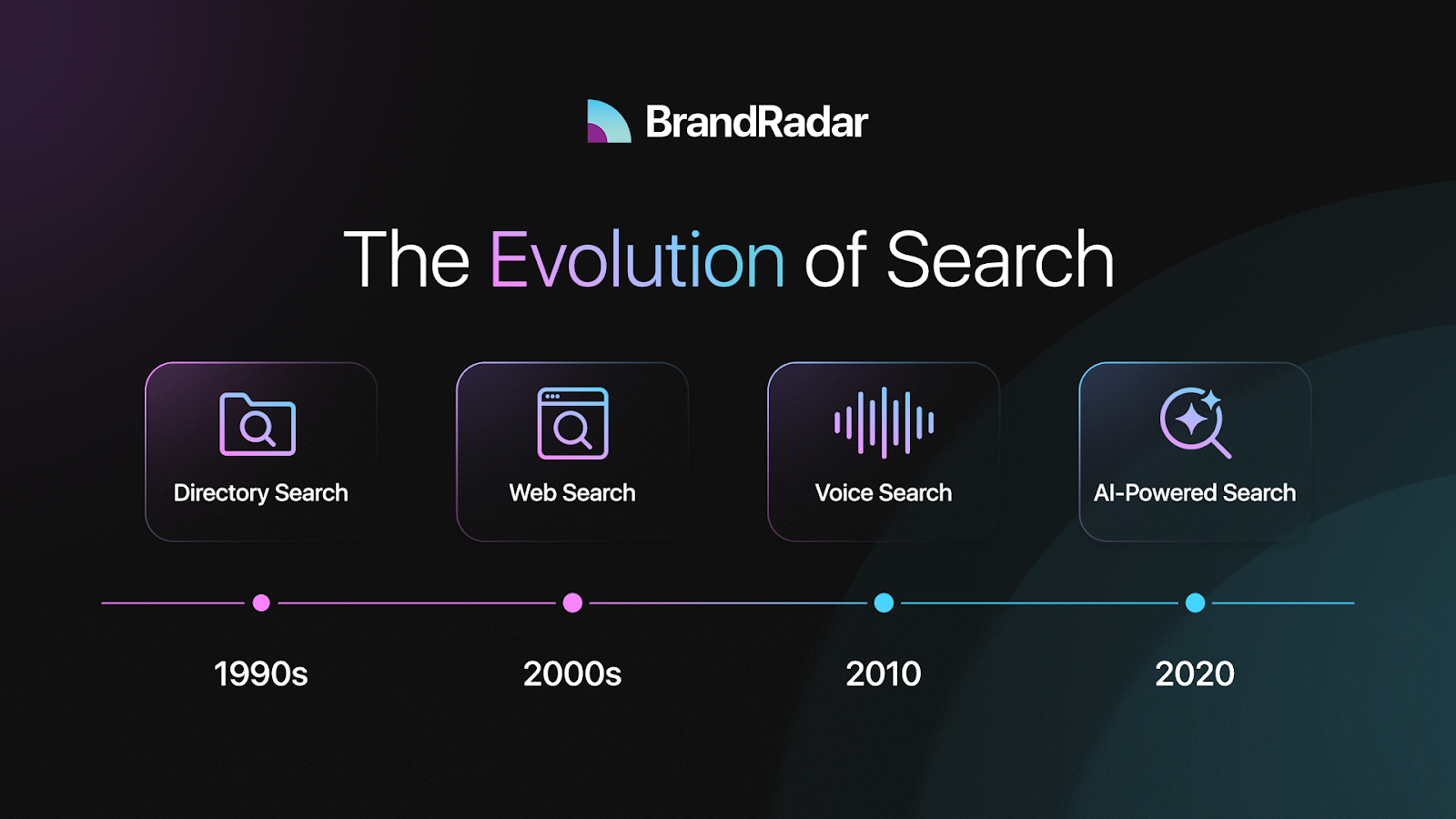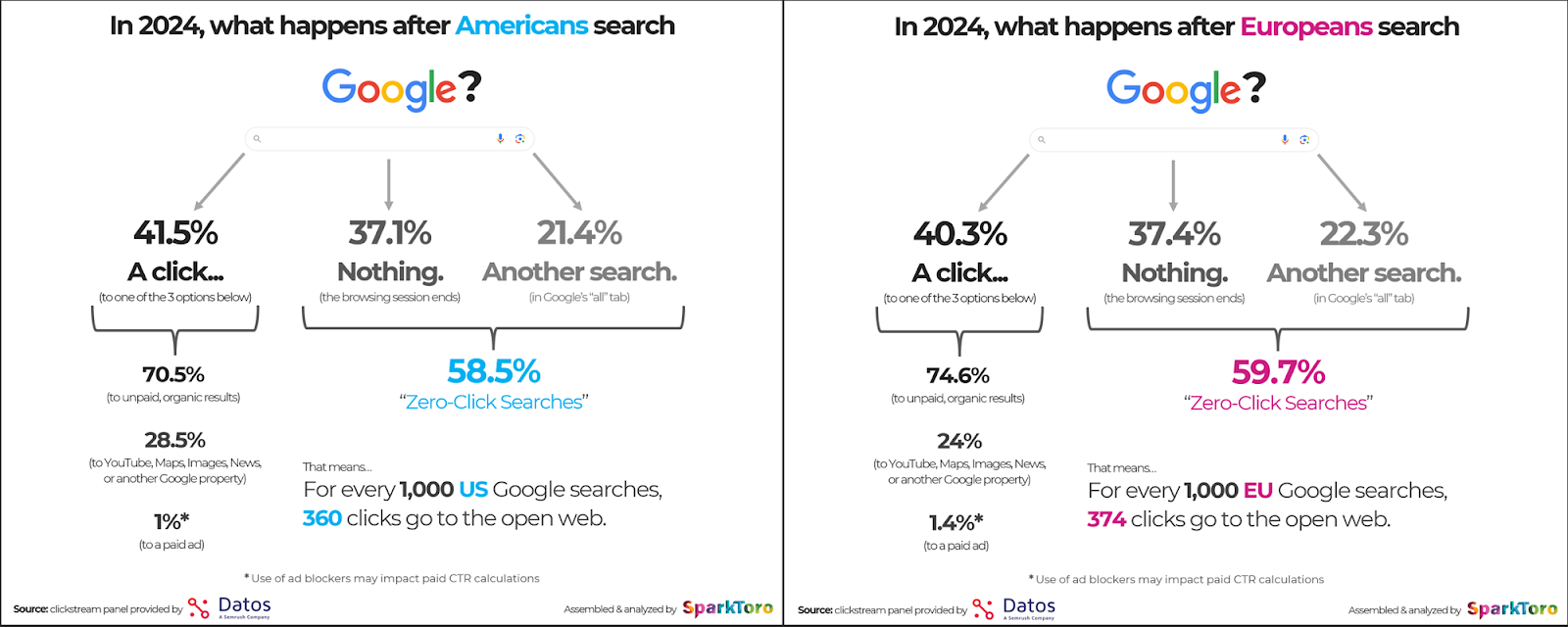
Niresh Bandaranayake
The Future of Search Is Generative. Is Your Brand Built to Be Seen?
Search is changing fast. The old playbook of optimizing web pages to rank in search results is no longer enough. Today’s search experience is fluid, intuitive, and driven by algorithms. Instead of scanning a list of links, users now ask questions and expect direct answers from AI tools like Google’s AI Overviews, ChatGPT, or Perplexity.
This isn’t a prediction. It’s already happening. And for brands, it’s both a risk and an opportunity. If your brand doesn’t appear in AI-generated responses, you’re not just missing traffic - you’re missing a key moment of influence. That’s when trust is built and purchase decisions begin.

Search used to be simple. Enter keywords, get a list of results. But with AI, it’s now conversational, contextual, and often zero-click. A user might ask, “What’s the best software for remote collaboration?” and get a complete answer within the AI interface. No Google. No scrolling. No website visit.
This shift is already reshaping how visibility works online.
Consider Hilton. In early 2024, a prompt like “Best hotel for a family vacation in Hawaii” was tested across several AI platforms. Hilton stood out in Google’s AI Overview, appearing with direct links, itinerary suggestions, and citations. Other major hotel brands didn’t show up at all. This wasn’t the result of paid ads or traditional SEO, Hilton earned that placement. because its content was trusted, well-structured, and optimized for AI. Why? Their content architecture, trust signals, and structured data made them LLM-friendly.
This isn’t just a best practice of SEO. It’s a blueprint for Generative Engine Optimization (GEO). In this world, being featured in an answer is the new Page 1.
This kind of presence is quickly becoming a competitive advantage. It’s no longer just about being found—it’s about being chosen by the algorithm in moments of intent.
We’re also seeing a rise in zero-click behavior. A 2024 study showed that nearly 60% of U.S. Google searches end without a single click. In the EU, the rate is similar. With the rollout of AI Overviews, even fewer users are clicking through. The answers they need are often right there on the page.

In news-related searches, the percentage of users not clicking through to publishers rose from 56% to 69% after AI summaries were introduced. That’s a significant drop in traffic, especially for brands that rely on organic reach to drive awareness, leads, and revenue.
Traditional SEO focused on rankings. AI Search Visibility focuses on becoming the answer. It’s not just about appearing in results. It’s about being the source AI relies on when crafting responses.
Two terms have emerged: Answer Engine Optimization (AEO) and Generative Engine Optimization (GEO). While they emphasize different aspects, they both reflect a shift in strategy. Instead of optimizing for clicks, you now optimize for inclusion—making sure your brand is part of the response, wherever it’s delivered.
To do this well, you need to:
Think of legacy SEO as your sitemap. GEO is your co-pilot in the AI answer box.
Being excluded from generative, and AI responses is more than a missed opportunity, it’s a loss of trust and influence before a user ever reaches your site.
This trend is affecting entire industries:
This isn’t just about visibility. It’s about perception, trust, and intent. If you're not in the answer, you're not even considered.
The Imperative: Be the Answer
To succeed in this new landscape, brands need to evolve. That means:
At brandradar.com, we built a platform to help brands master this transition. Our tools let you:
We go beyond clicks. We measure presence and influence, where it now matters most.
Search isn’t dying. It’s changing shape. And the brands that evolve with it will come out on top.
In this new era, visibility isn’t just about being found. It’s about being trusted. It’s about being the brand AI turns to when people ask questions.
The future of search is generative. Will your brand be the answer?